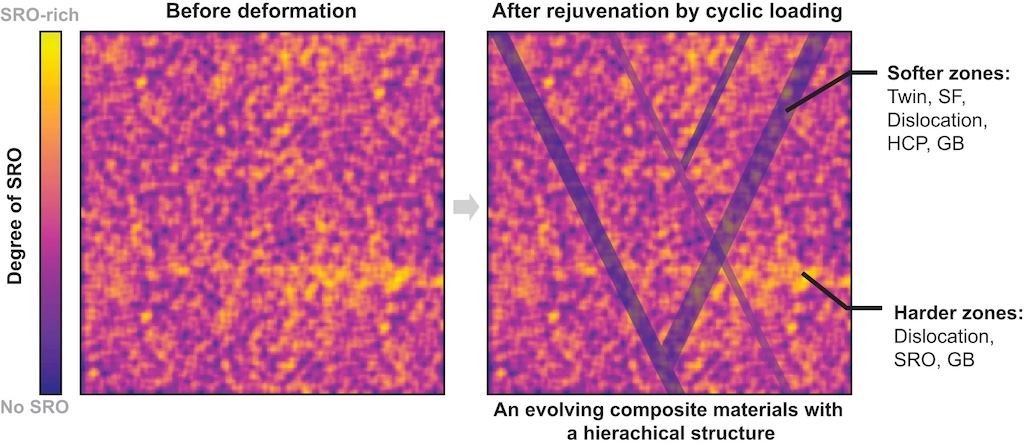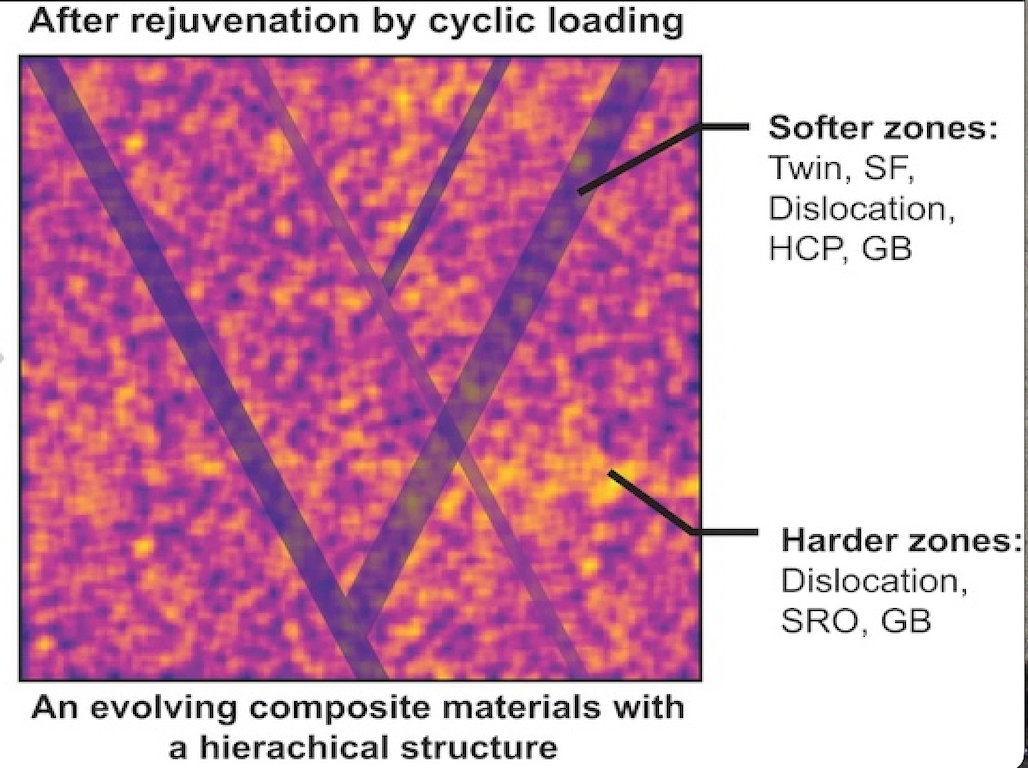February 2024 | In a recent publication in Nature Communications, researchers from Pennsylvania State University have unveiled significant insights into the structural characteristics of high- and medium-entropy alloys (HEA/MEA).
These materials, notably the chromium-cobalt-nickel (CrCoNi) medium entropy alloy (MEA), demonstrate remarkable resistance to extreme temperatures and fractures, making them suitable for use in high-demand applications such as aerospace turbines, nuclear reactors, and space exploration equipment.
The study in collaboration with colleagues from the University of California Berkeley and Lawrence Berkeley National Laboratory provides a detailed examination of the role of the short-range local atomic arrangement within a material and its influence on the mechanical performance of these alloys. The specific contributions of short-range order to this property had not been directly observed or quantitatively measured due to the subtlety of these atomic arrangements.
“The mechanical performance of the CrCoNi is amazing,” said co-corresponding author Yang Yang, Penn State assistant professor of engineering science and mechanics and nuclear engineering who is also affiliated with the Materials Research Institute. “For example, it has recently been shown to have the highest toughness on Earth at nearly –250 °C. But people didn’t know why it was so good.”
Using a novel application of energy-filtered 4D scanning transmission electron microscopy (4D-STEM), the research team was able to visualize the evolution of planar defects under mechanical stress. The method allowed for the capture of hundreds of electron diffraction images per second, combining a broad field of view with high resolution, and enabling a comprehensive analysis of defect formation and evolution during deformation.
The findings revealed that planar defects exhibit full reversibility during initial deformation cycles, a property that is gradually lost with continued mechanical stress, leading to the permanent presence of these defects post-deformation. This transition is attributed to the influence of short-range order within the alloy, which initially facilitates reversible deformation processes. Over time, mechanical deformation disrupts this order, shifting the deformation mechanism towards one that preferentially forms planar defects.

Schematic drawing showing the nanostructural origin of the superior damage tolerance in MEAs and HEAs during the deformation process / Nature Communications (2024). DOI: 10.1038/s41467-024-45696-z
More information
The full study (open access) is available at Nature Communications:
Yang Yang et al, Rejuvenation as the origin of planar defects in the CrCoNi medium entropy alloy, Nature Communications (2024). DOI: 10.1038/s41467-024-45696-z
